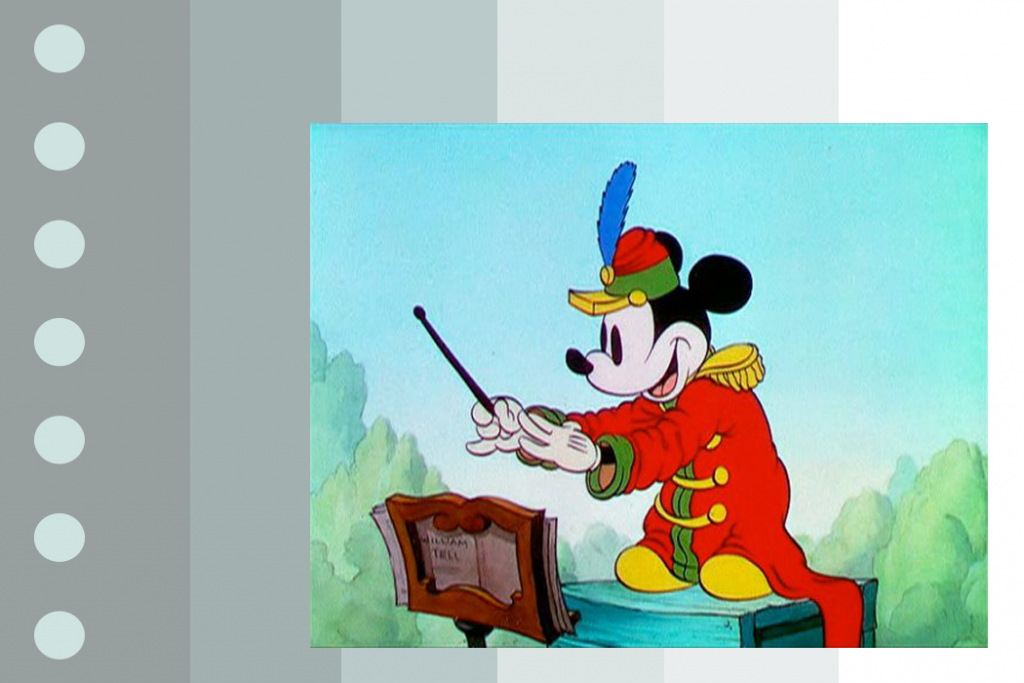+ Soundfly’s Intro to Scoring for Film & TV is a full-throttle plunge into the compositional practices and techniques used throughout the industry, and your guide for breaking into it. Preview for free today!
Studying film scoring at UCLA was the musical experience of my life. For a full year we wrote to scene, furiously scribbled out the parts, had them played by pros and critiqued by actual film composers, then on to the next and the next. It was practical, intense, and insanely great.
For one session, one of us scored a street fight with these intricately-timed percussion hits on every punch, something that’s really hard to pull off. When the instructor Don Ray played it back against the visual, he said, “Okay, see how Matt landed those hits on the punches? That’s mickeymousing.”
Two minutes later, “And again, there’s mickeymousing.”
We all nodded, impressed.
The next week was a rooftop chase, and every single one of us included this magical mickeymousing technique. Every action on screen had a corresponding pop in the music.
By the third cue, Don was laughing and shaking his head. “My fault, my fault. I was too subtle. Last week, when I mentioned Matt’s mickeymousing? I didn’t put enough stink on it. IT’S A BAD THING. It draws attention to itself. Don’t do it.”
As the name implies, lining up the score with the small details of the action started with the early Mickey Mouse cartoons, all the way back to Steamboat Willie. But the absolute heyday of mickeymousing was Looney Tunes (0:42):
It isn’t only in animation. Here’s Bill Sikes beating Nancy to death in the otherwise homicide-free musical Oliver (0:18):
By the 1980s, the technique was used mostly for comic effect, like so (0:54):
If you’re scoring a coyote sneaking up on a roadrunner, or scoring a parody, or scoring in 1938, mickeymousing is a terrific idea. Otherwise <insert stink here> IT’S A BAD THING.
And yet, how perfect is this… (0:31):
So use your best judgment next time you’re scoring a scene, where your sync lands on the slapstick musical humor versus action heightening scale.
Have you checked out Soundfly’s courses yet?
Continue your learning with hundreds of lessons by boundary-pushing, independent artists like Kimbra, Ryan Lott & Ian Chang (of Son Lux), Jlin, Elijah Fox, Kiefer, Com Truise, The Pocket Queen, and RJD2. And don’t forget to try out our intro course on Scoring for Film & TV.
—
Dale McGowan has one foot in arts, the other in sciences, and the other in nonreligious life. He double-majored in music and evolutionary anthropology at UC Berkeley, then studied film scoring at UCLA before conducting a college orchestra while earning a Ph.D. in Composition from the University of Minnesota. Dale is managing editor of nonreligious writers at Patheos, the world’s largest website for multi-belief opinion. He teaches music at Oglethorpe University, is at work on a book about how music communicates emotion, and hosts the How Music Does That podcast.




